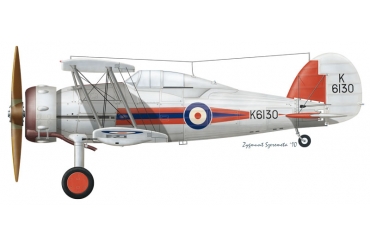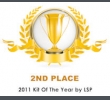Gloster Gladiator Mk I - Mk II
-
 Box
Box
-
 72 Squadron, Church Fenton, 1937
72 Squadron, Church Fenton, 1937
-
 1/LeLv 16, Finnish Air Force, 1942
1/LeLv 16, Finnish Air Force, 1942
-
 247 Squadron (the only squadron of the Battle of Britain), 1940
247 Squadron (the only squadron of the Battle of Britain), 1940
History
The Gladiator was to be the last British biplane fighter and the first fighter with an enclosed cockpit. The design was being eclipsed by new generation(monoplane) fighters, such as the RAF’s new Hawker Hurricane and Supermarine Spitfire. The first version, the Gladiator Mk I, was delivered from July 1936, becoming operational in January 1937. The Gladiator Mk II soon followed, the main differences being a slightly more powerful Mercury engine driving a Fairey fixed-pitch three-bladed metal propeller instead of the two-bladed wooden one. The Gladiator was largely replaced in front line RAF service by the Hurricane and Spitfire at the outbreak of the Second World War. However, two squadrons were still used in the French and Norwegian campaigns and some planes were also in service during more peripheral campaigns during the early years of the Second World War. The classic biplane fighter was also one of Britain’s biggest pre-war export successes, seeing service in many countries. The Gloster Gladiator performed reasonably well in limited Finnish service against Soviet fighters during the Winter War. A total of 483 aircraft were built for the Royal Air Force; and the rest was exported to 14 countries (Belgium, China, Egypt, Finland, Free France, Greece, Iraq, Ireland, Latvia, Lithuania, Norway, Portugal, South Africa and Sweden).
Technical data:
Lenght: 8,36 m
Wingspan: 9,83 m
Height: 3,58 m
Wing area: 30,00 m²
Empty weight: 1462 kg
Loaded weight: 2088 kg
Power plant: Mk I - Bristol Mercury IX, 619 kW (830 hp); Mk II - Bristol Mercury VIII A
Max speed: 407 km/h
Endurance: 2 hours
Service ceiling: 10000 m
Armament: four machine guns: 2 synchronised guns in fuselage sides and one beneath each lower wing
































